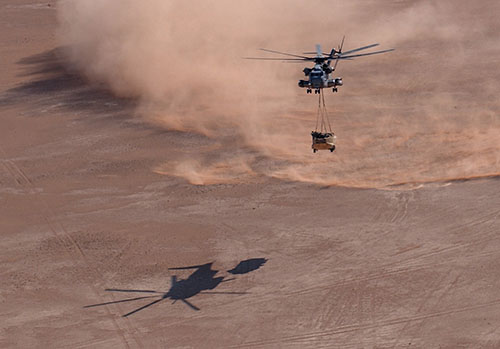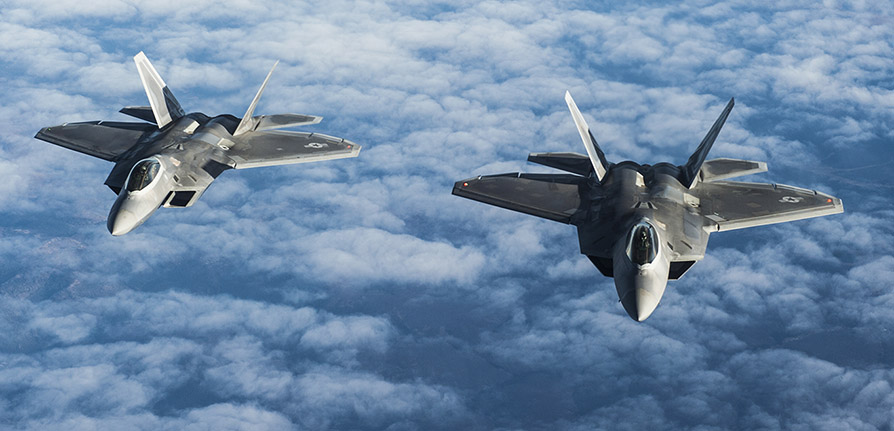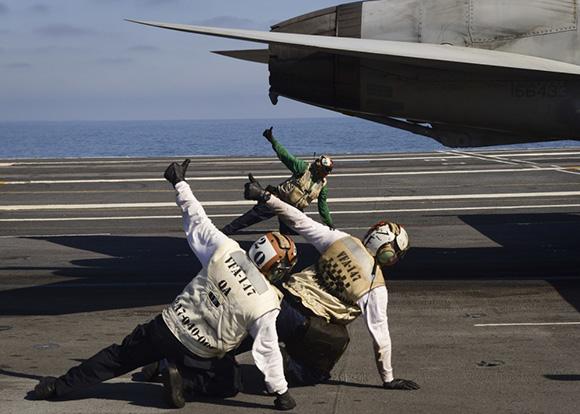The United States Navy wants another twelve F / A-18E / F Super Hornet to replace the most obsolete aircraft. In National Defense Authorization Act for the fiscal year 2017 and approved by the Chamber, no sum is allocated to purchase (further) F-35, F / A-18E / F Super Hornet and AH-64 helicopters Apache. The acquisition programs for the F-35 (2443 planes), the class aircraft carriers Ford (10 aircraft carrier) and for the B-21 bomber (one hundred aircraft) have not undergone any change. The financial instrument equal to 619 billion dollars, will reach the Senate this week.
The purchase of Super Hornet it would be on top of the Unfunded Requirements List. Immediately after the approval of the budget, the Congress requires the US military to draw up the list of unfunded items, deciding independently what to finance further, by adding additional amounts. Requests can also be ignored. For the twelve Super Hornet there is optimism, however, considering that the Republicans, who control both houses of Congress and the White House, have guaranteed an increase in military spending levels. With Donald Trump, even the 2010 law, which provided for mandatory maximum ceilings to be respected for Defense, could be distorted.
The United States Navy intends to retire the Hornet entered service in the 80 years. These regenerated aircraft could be transferred to the Marine Corps. The cuts in defense have had devastating effects on American aviation. The standard American squadron is based on 24 aircraft (F-16 or F15) PAA or Primary Authorized Aircraft and two in inventory BAI O Backup Aircraft Inventory, while. The five squadrons Raptor fighters have in line 21 plus two aircraft in BAI.
 In the 1991, the US air force was 134 hunting squadrons. Today I am 55. The average age of a US military aircraft is 27 years. The average age of a B-52H is fifty-three years. The B-1B is around twenty-eight years old. The B-2A are the most recent systems with an average life of about twenty years.
In the 1991, the US air force was 134 hunting squadrons. Today I am 55. The average age of a US military aircraft is 27 years. The average age of a B-52H is fifty-three years. The B-1B is around twenty-eight years old. The B-2A are the most recent systems with an average life of about twenty years.
Officially, the United States Marine Corps owns a fighting air force, purchased between the years '80 and' 90, of 276 F / A-18 Hornet, more than two thirds with operational capacity. Only 87 fighters on 276 are really capable of flying, equal to 32% of the fleet. The rest is under maintenance or awaiting updating. Both operations can only take place subject to economic availability.
The Marine Corps, official data, with the current aircraft available, manages to fly the pilots in training for only ten hours a month compared to the minimum sixteen. Yet the Marines point out that to fight all the American wars in the world, they would always need the 58% of the F / A-18 fighters in the fleet.
Statistics mask the real extent of the crisis. The marines keep around 40 Hornet between the Middle East and the western Pacific for air strikes against ISIS and for patrols close to the Chinese and North Korean area. Other 30 F / A-18 are intended for pilot training. This means that only 17 Hornet they can be driven by hundreds of pilots who have to fly at least a couple of times a week. In total, the Marine fleet consists of 438 aircraft, although 1065 would be needed.
 Under a contract signed with Boeing in the 2014, the Marine Corps ordered thirty regenerated F / A-18s, parked for years in the Davis-Monthan Air Force Base depot, near Tucson. It is rare, but not exceptional. Suffice it to say that during the war in Iraq, the Marine Corps called helicopters back into service Super Stallion to make up for losses due to the wear and tear of constant use in the Middle East. All the Hornet regenerated will be brought to the standard C. Boeing guarantees another ten years of activity for the cells, with a moderate use. Fifteen in-line aircraft are delivered. The thirty regenerated Hornets should allow the Marines to guarantee greater availability for the training departments and make the transition to the F-35 easier, which continues to lag. The Marine Corps, which declared its first JSF squadron operational last summer, hopes to activate a second one by the end of next June. The new Marine fleet should consist of 420 F-35 in 22 squadrons within the 2032.
Under a contract signed with Boeing in the 2014, the Marine Corps ordered thirty regenerated F / A-18s, parked for years in the Davis-Monthan Air Force Base depot, near Tucson. It is rare, but not exceptional. Suffice it to say that during the war in Iraq, the Marine Corps called helicopters back into service Super Stallion to make up for losses due to the wear and tear of constant use in the Middle East. All the Hornet regenerated will be brought to the standard C. Boeing guarantees another ten years of activity for the cells, with a moderate use. Fifteen in-line aircraft are delivered. The thirty regenerated Hornets should allow the Marines to guarantee greater availability for the training departments and make the transition to the F-35 easier, which continues to lag. The Marine Corps, which declared its first JSF squadron operational last summer, hopes to activate a second one by the end of next June. The new Marine fleet should consist of 420 F-35 in 22 squadrons within the 2032.
The Marines, however, are not exempt from blame for having waited twenty years for a new platform, today too expensive, to the detriment of the investments necessary for the readiness of the fleet. At the end of the 1990, the transition to the Marine was proposed Super Hornet that the US Navy was developing for its aircraft carriers. The Marine Corps decision will prove to be fatal (in hindsight). The Super Hornet it was discarded waiting for the F-35 which in 1990 would have to enter the 2006. We know how it will end. To date, the F-35B costs on average three times more than a new F / A-18E / F purchased from the US Navy.
 The Marine Corps has bet everything on the JSF, but the acquisition plans do not coincide with the real economic capacities. The Air Force, for example, planned to buy 48 F-35 in the 2019. Supply destined to grow with 60 F-35 in the 2020 and 80 in the 2021. The F-44 delivered should be 35 by the end of the year. In total the Air Force expects to have something like 2038 F-1763 in line, within the 35. From now on it appears evident that this production rate cannot be economically sustainable, even under the Trump presidency. This means that F-15 and F-16 will remain in service longer with programs for the modernization and extension of cell life for 300 F-16 and one hundred F-15 already in place.
The Marine Corps has bet everything on the JSF, but the acquisition plans do not coincide with the real economic capacities. The Air Force, for example, planned to buy 48 F-35 in the 2019. Supply destined to grow with 60 F-35 in the 2020 and 80 in the 2021. The F-44 delivered should be 35 by the end of the year. In total the Air Force expects to have something like 2038 F-1763 in line, within the 35. From now on it appears evident that this production rate cannot be economically sustainable, even under the Trump presidency. This means that F-15 and F-16 will remain in service longer with programs for the modernization and extension of cell life for 300 F-16 and one hundred F-15 already in place.
At least until the 2025, the Air Force's proposed strategy involves the massive use of F-15 and F-16 for low-end tasks, reserving the only high-end missions for the F-22. It is clear that those 123 Raptor they are far too few to guarantee optimal levels of presence in crisis areas around the globe in twenty years.
The F-22 Raptor, it was built in exemplary 186 only, but only 123 are converted to combat. The rest of the fighters are classified as inventory machines, intended for testing or off-duty activities. The main problem is that the Air Force, considering the current threats and the contexts where the presence of a fifth generation platform is needed, would need 382 Raptor.
The Phoenix, approached to Next Generation Air Dominance, could revive the F-22 project and turn it into a sixth generation platform. This too will be a decision that will be made by President Trump, considering that the Air Force needs a new fighter starting from the 2030, but cannot afford the twenty-year development of a new platform. The "Fenice" program proposes the evolution of existing technology.

(photo: US Navy / USMC / US Air Force / Lockheed Martin)












